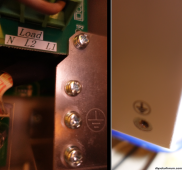kolek
village idiot
- Joined
- Sep 29, 2021
- Messages
- 344
First time connecting Deye 8K inverter (model SUN-8K-SG01LP1-US) in Japan.
- Solar panels are connected.
- Inverter is NOT connected to the grid.
- No battery is connected.
I'm having an F08 error GFDI _Relay_Failure.
For this error code, the manual says:
"When inverter is in Split phase(120/240Vac) or three-phase system (120/208Vac) system, the backup load port N line needs to connect ground."
I cannot find anything labeled "backup load port" and I don't know how to ground it even if I could find that port.
I've spent 3 hours searching for answers, nothing yet. Deye has not provided any support.
Can anyone help? Others have posted about this problem here before, but I haven't seen a clear answer yet. I'll find the other threads where it's mentioned and post them here.
Two are posting they have the same problem here on Sol-Ark models, same error, Deye makes SolArk:

 diysolarforum.com
diysolarforum.com
- Solar panels are connected.
- Inverter is NOT connected to the grid.
- No battery is connected.
I'm having an F08 error GFDI _Relay_Failure.
For this error code, the manual says:
"When inverter is in Split phase(120/240Vac) or three-phase system (120/208Vac) system, the backup load port N line needs to connect ground."
I cannot find anything labeled "backup load port" and I don't know how to ground it even if I could find that port.
I've spent 3 hours searching for answers, nothing yet. Deye has not provided any support.
Can anyone help? Others have posted about this problem here before, but I haven't seen a clear answer yet. I'll find the other threads where it's mentioned and post them here.
Two are posting they have the same problem here on Sol-Ark models, same error, Deye makes SolArk:

Sol-Ark Installers Experience - All Common questions and answers
thanks for this OP! As I have a question here.. What is the deal with this diagram? I get pretty much everything about it except for the part how the transfer/critloads panel connects the the main panel and the rest of the house. Why is there just an "A" there, and that black wire to "load"...
Last edited:




